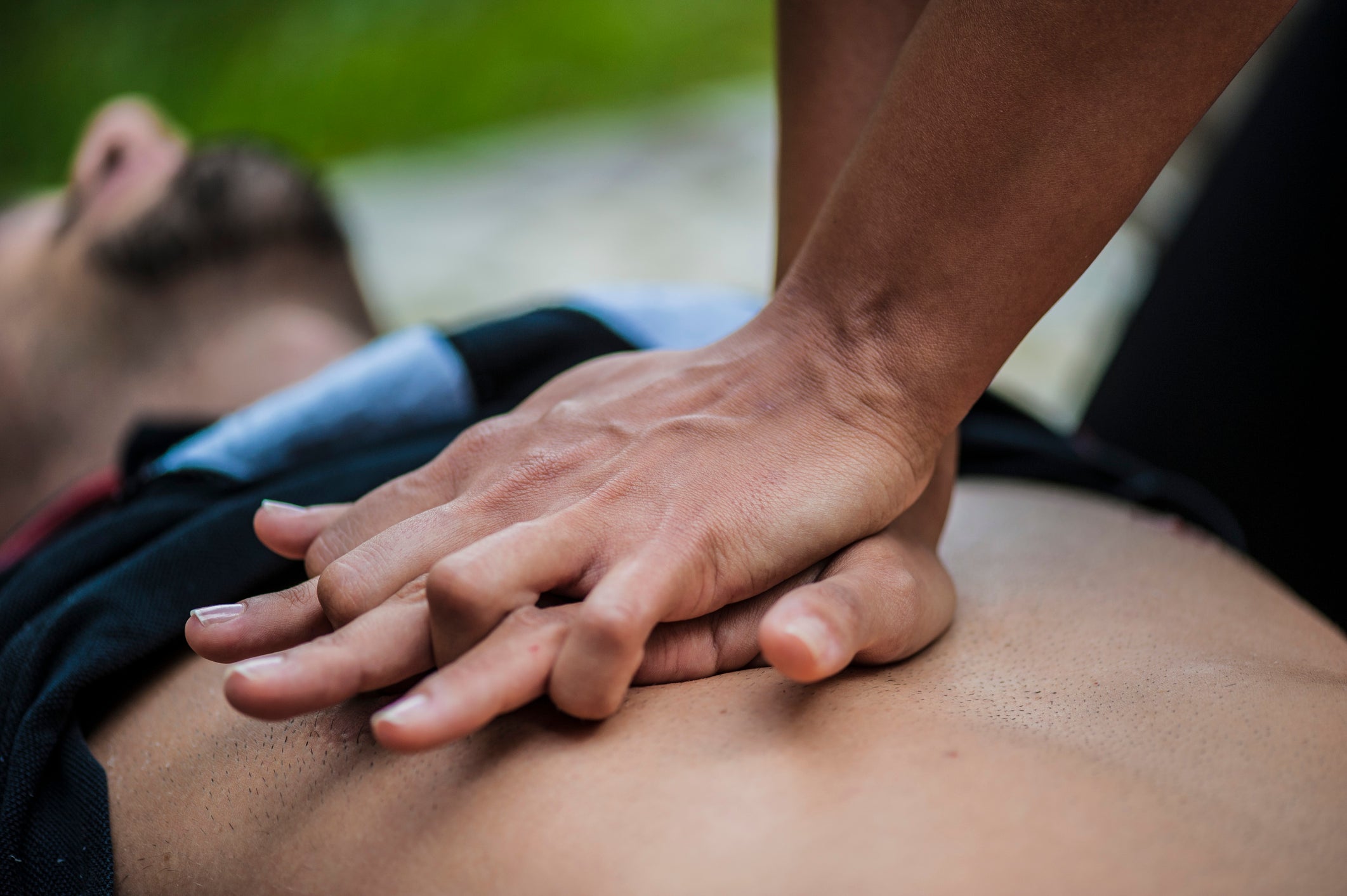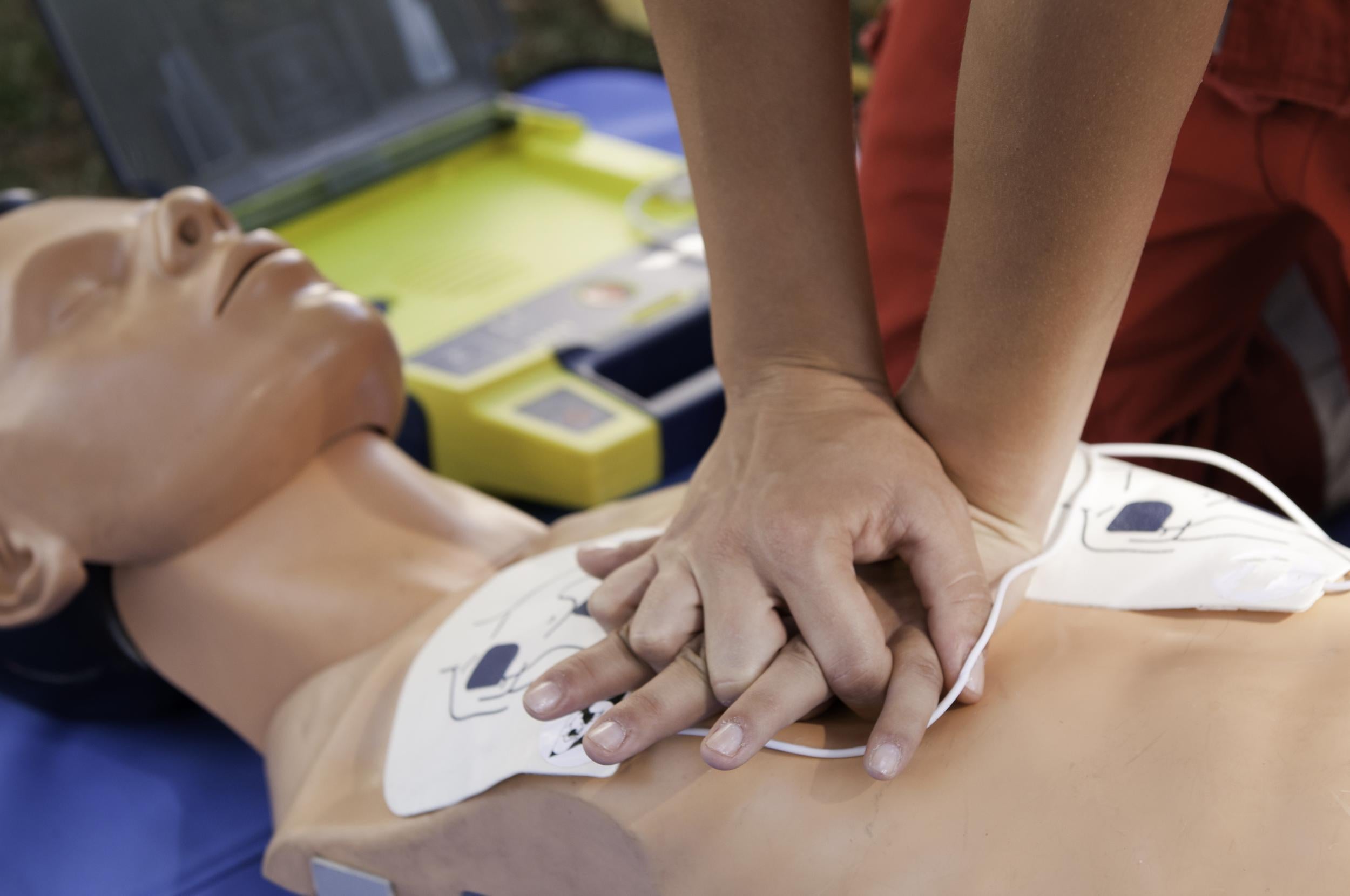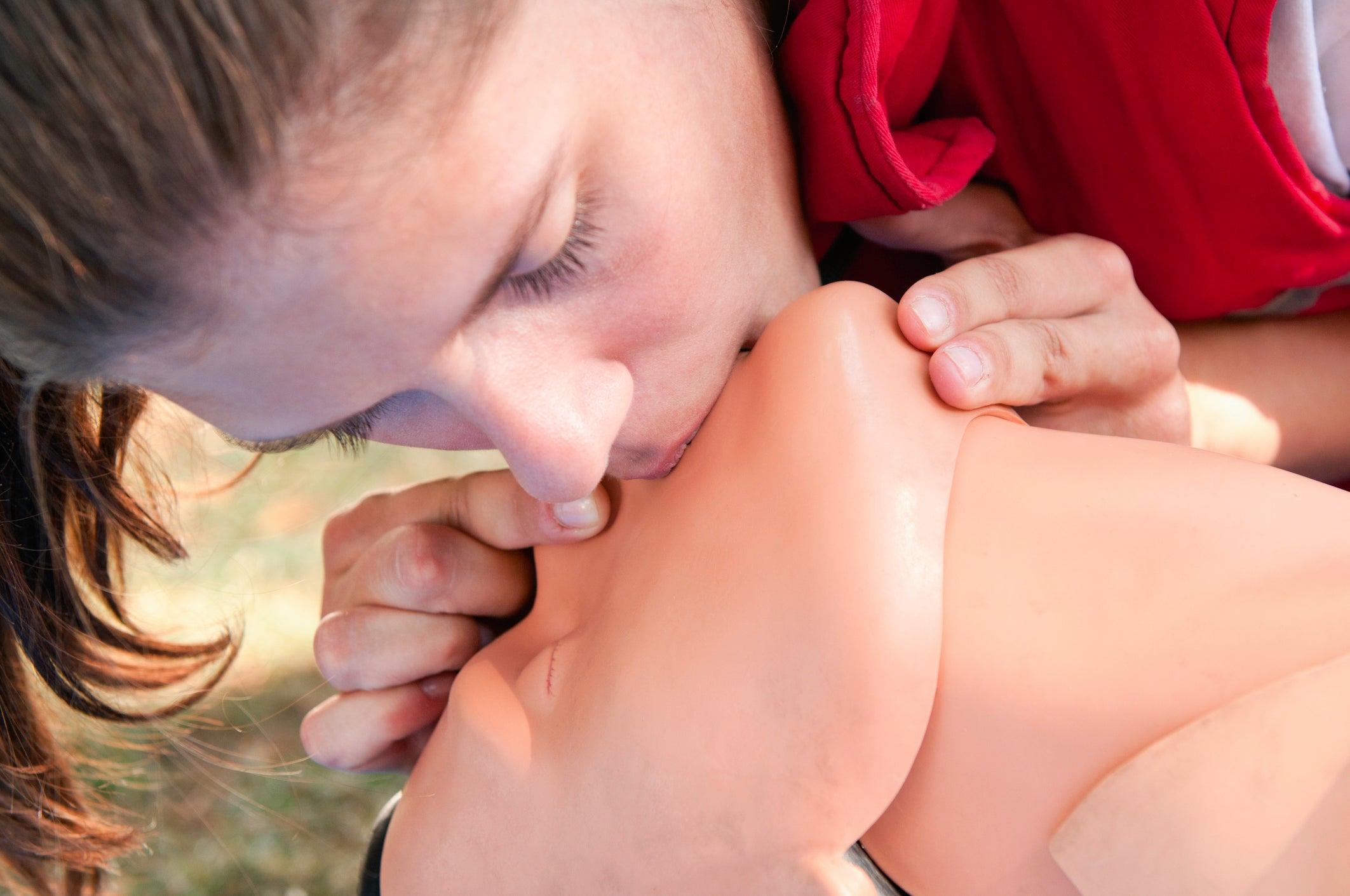How to perform CPR if someone is unresponsive and not breathing
Carrying out CPR before an ambulance arrives can help save a person's life

Your support helps us to tell the story
From reproductive rights to climate change to Big Tech, The Independent is on the ground when the story is developing. Whether it's investigating the financials of Elon Musk's pro-Trump PAC or producing our latest documentary, 'The A Word', which shines a light on the American women fighting for reproductive rights, we know how important it is to parse out the facts from the messaging.
At such a critical moment in US history, we need reporters on the ground. Your donation allows us to keep sending journalists to speak to both sides of the story.
The Independent is trusted by Americans across the entire political spectrum. And unlike many other quality news outlets, we choose not to lock Americans out of our reporting and analysis with paywalls. We believe quality journalism should be available to everyone, paid for by those who can afford it.
Your support makes all the difference.If you come across someone who is unresponsive and they don’t seem to be breathing, being able to perform CPR (cardiopulmonary resuscitation) before the emergency services arrive could save their life.
According to a study commissioned by the British Heart Foundation (BHF) in 2018, nearly a third of UK adults wouldn’t feel confident enough to perform CPR if they saw someone suffering a cardiac arrest.
Here is everything you need to know about how to carry out CPR when needed.
Assess the situation
In order to check whether or not a person is in need of CPR, the first thing you need to do is to gently shake their shoulders while simultaneously asking if they’re alright, the BHF explains.
You also need to be aware of your surroundings, as you may be in an environment that’s putting you and the unresponsive individual in danger.
After scanning the area for potential risks, such as incoming cars on a road, shout in order to attract the attention of any passersby that can help you.
You must never leave an unconscious person on their own, even if you’re searching for aid, as this can put them at risk.
Check they’re breathing
If a person is unresponsive, then St John Ambulance advises opening their airway.
To do this, place one hand on their forehead and two fingers under their chin.
Then, gently tilt their head back while lifting their chin at the same time.
If a person has suffered a cardiac arrest, then they will either not be breathing normally or not be breathing at all.
To check whether they're breathing, keep an eye on their chest to see if you can spot any movement while keeping their head tilted back.
Listen intently to see if you can hear their breath, and place your face near their mouth to see if you can feel any breath on your cheek.
If you can’t detect any breathing at all, then an ambulance will need to be called at either 999 or 112.
While waiting for the ambulance, you can then begin performing CPR.

Chest compressions
First, kneel beside the unconscious individual with your knees level with their chest.
Next, the NHS advises placing the heel of one of your hands on the centre of their chest, placing your other hand on top and interlocking your fingers.
Make sure that your shoulders are above your hands before pressing down hard on their chest, straightening your arms and using your entire body weight.
The BHF recommends trying to push down by at least five to six centimetres, before releasing and pushing down again.
The organisation states that you should aim to give 30 chest compressions at a speed of 100 to 120 chest compressions per minute, which is around two per second.

The New York Presbyterian Hospital has created a Spotify playlist that contains a list songs that maintain the tempo needed to perform chest compressions, all at 100 beats per minute.
The songs include "Just Dance" by Lady Gaga, "Fast Car" by Tracy Chapman and "Gives You Hell" by The All-American Rejects.
If performing CPR on a child under the age of one, the NHS states that you should carry out the chest compressions by placing two fingers in the middle of their chest and pushing down by about four centimetres.
Rescue breaths
After carrying out 30 chest compressions, you’ll need to give two rescue breaths if the individual is showing no signs of breathing.
To do this, first open the airway using the same method outlined by St John’s Ambulance above.
Once their head has been tilted back and their chin has been lifted, pinch the soft part of their nose closed.

First, inhale as normal. Then, place your mouth on top of theirs and breathe out.
Once you’ve done this once, remove your mouth from theirs and carry out the same process again.
You should be able to spot chest movement while carrying out the rescue breaths.
If carrying out CPR on a child, the NHS states that you should initially give five rescue breaths after carrying out the chest compressions.
Then, after repeating the chest compressions, continue the process by giving two rescue breaths.
Keep repeating the chest compressions and rescue breaths until an ambulance arrives or until the person starts regaining consciousness or breathing properly.
If you’re feeling tired, have someone else take over the CPR, making sure that they’re performing it correctly.
For more information on CPR, visit the NHS website here.
Join our commenting forum
Join thought-provoking conversations, follow other Independent readers and see their replies
Comments